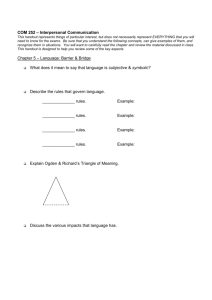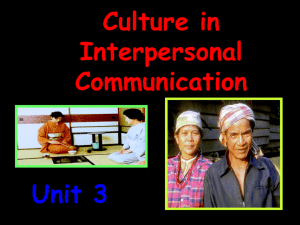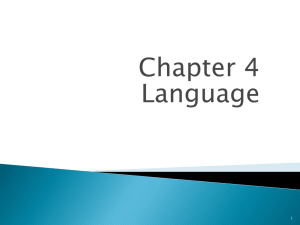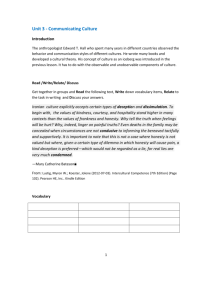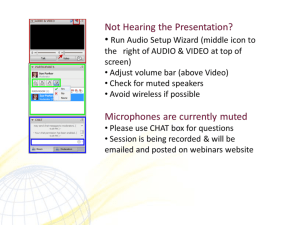Harrington 21M.604 Fall 2005 Week 4, Handout
advertisement
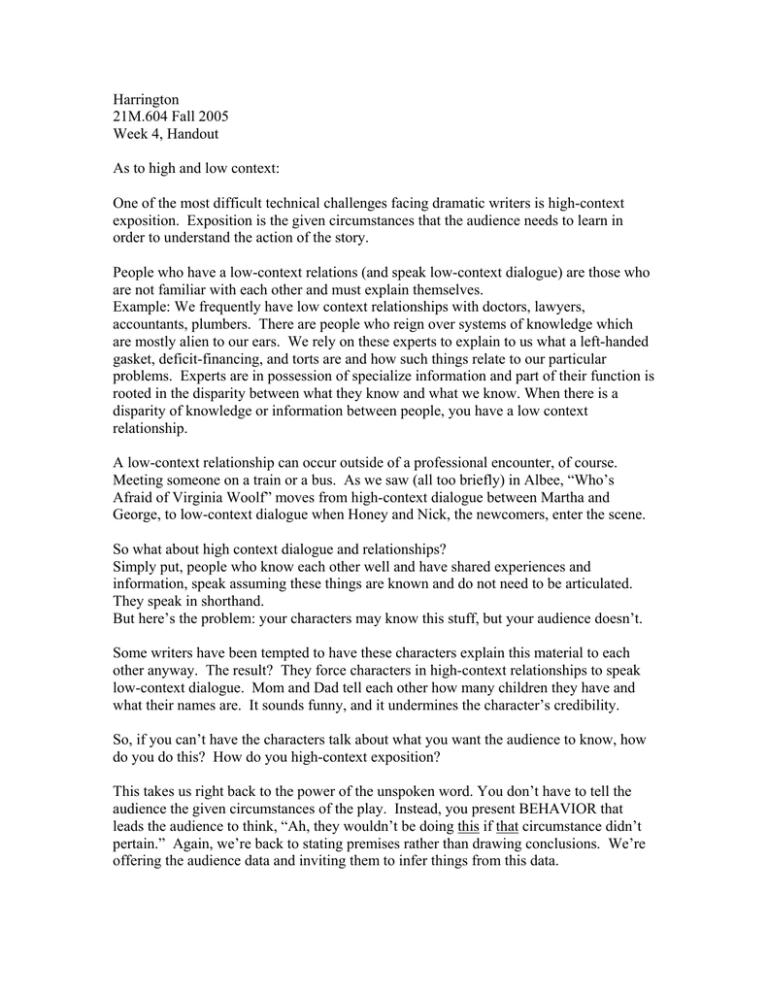
Harrington 21M.604 Fall 2005 Week 4, Handout As to high and low context: One of the most difficult technical challenges facing dramatic writers is high-context exposition. Exposition is the given circumstances that the audience needs to learn in order to understand the action of the story. People who have a low-context relations (and speak low-context dialogue) are those who are not familiar with each other and must explain themselves. Example: We frequently have low context relationships with doctors, lawyers, accountants, plumbers. There are people who reign over systems of knowledge which are mostly alien to our ears. We rely on these experts to explain to us what a left-handed gasket, deficit-financing, and torts are and how such things relate to our particular problems. Experts are in possession of specialize information and part of their function is rooted in the disparity between what they know and what we know. When there is a disparity of knowledge or information between people, you have a low context relationship. A low-context relationship can occur outside of a professional encounter, of course. Meeting someone on a train or a bus. As we saw (all too briefly) in Albee, “Who’s Afraid of Virginia Woolf” moves from high-context dialogue between Martha and George, to low-context dialogue when Honey and Nick, the newcomers, enter the scene. So what about high context dialogue and relationships? Simply put, people who know each other well and have shared experiences and information, speak assuming these things are known and do not need to be articulated. They speak in shorthand. But here’s the problem: your characters may know this stuff, but your audience doesn’t. Some writers have been tempted to have these characters explain this material to each other anyway. The result? They force characters in high-context relationships to speak low-context dialogue. Mom and Dad tell each other how many children they have and what their names are. It sounds funny, and it undermines the character’s credibility. So, if you can’t have the characters talk about what you want the audience to know, how do you do this? How do you high-context exposition? This takes us right back to the power of the unspoken word. You don’t have to tell the audience the given circumstances of the play. Instead, you present BEHAVIOR that leads the audience to think, “Ah, they wouldn’t be doing this if that circumstance didn’t pertain.” Again, we’re back to stating premises rather than drawing conclusions. We’re offering the audience data and inviting them to infer things from this data. What did we infer from what Albee showed us in that opening scene with George and Martha? They drink and spar to salve their pain—what’s the locus of that pain? Stuck in a university town? Stuck under “daddy’s” thumb? A tragedy with a child? Etc, etc. Just as in the unspoken word monologue where you had to make the audience conjure up the unspoken word, the challenge in this assignment is to encourage the audience to conjure up the exposition themselves. One way is to have the characters deal with a problem that could exist only given the circumstances you wish to expose. Don’t have them talk about the circumstance itself; have them negotiate over the problem. Have fun with this. Remember, you can always introduce a new character and shift from high- to low-context dialogue.
